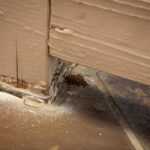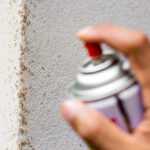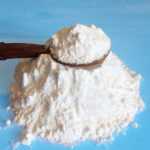What is a Vapor Barrier?
A vapor barrier is a crucial component in your home’s construction, designed to prevent moisture from wreaking havoc on your living space. Essentially, it’s a material—often a thick plastic or foil sheet—that impedes the transmission of water vapor. By doing so, it helps to protect your home from moisture damage, which can lead to mold growth, wood rot, and other structural issues.
Vapor barriers are typically installed in walls, ceilings, and floors to control the movement of water vapor. They are categorized based on their permeability, with Class I barriers being the most impermeable and Class III barriers being the most permeable. This classification helps in selecting the right type of vapor barrier for different parts of your home, ensuring optimal protection against moisture.
Understanding the Basics
How Important is it to Replace Your Damaged Vapor Barrier?
Unfortunately, it happens: Vapor barriers in homes across PortlandVancouver get damaged from a whole host of reasons. Wildlife infestations, like raccoons and opossums, rodent activity like rats and mice, and even flooded crawlspaces can leave a homeowner wondering how important their home’s vapor barrier is, and if it needs to be replaced once one of the above has happened.
In some cases, vapor retarder paints, which are semi-permeable materials, can be used to provide a certain level of moisture protection.
Your home’s vapor barrier
First, understanding what the purpose of your home’s vapor barrier is can be helpful. Your home’s vapor barrier, unlike an air barrier which prevents air from permeating through a structure, is generally a thick plastic sheeting that is placed in your home’s crawlspace. In Oregon and Washington, in order for this plastic sheeting to be code, it should be black, and no less than 6mm thick. This sheeting is placed initially when the home is constructed, and covers the entire ground from the foundation walls, to the center leaving no exposed ground. Many times in older homes, there is no vapor barrier as it wasn’t required until recent years.
The purpose of your home’s vapor barrier in controlling water vapor
The purpose of a home’s vapor barrier is pretty simple, it controls the humidity in your home’s crawlspace by placing a barrier between the ground, and your home. The plastic sheeting acts as a barrier between what could be moist dirt and the air in the crawlspace. Here in the damp Northwest, vapor barriers will also keep moisture in the air from penetrating the soil as well, again controlling the relative humidity of your home’s crawlspace.
In order for a vapor barrier to work properly, all ground must be covered, and it is generally recommended that seams are overlapped and secured together using a construction grade tape, or sealing system. It is also recommended by most crawlspace professionals that the plastic sheeting should be run up the foundation walls to provide additional protection.
Why your home’s vapor barrier is important
Vapor barriers are important, especially here in the Northwest because it’s important to control the relative humidity in your home’s crawlspace. Understanding vapor diffusion, the movement of water vapor through building materials, is essential for effectively controlling moisture and preventing structural issues. A home that has too much humidity in the crawlspace will often develop musty smells coming from the crawlspace, which can be transmitted through the home’s heating and cooling system. Too much moisture in the crawlspace can also create structural, insulation, and mold problems.
When it’s time to replace a home’s vapor barrier
Typically a home’s vapor barrier should last for many years, but there are times when circumstances warrant the vapor barrier being replaced. If your home has encountered any of the below issues, it can be wise to have a crawlspace professional inspect your vapor barrier to ensure it’s protecting your home the way it should. In some cases, vapor retarder paints, which are semi-permeable materials, can be used to provide a certain level of moisture protection.
- You experience a water problem in your crawlspace. Water issues in crawlspaces are pretty normal here in the Portland and Vancouver area. If your crawlspace has water, and/or drainage issues, these need to be fixed as standing water creates a moisture rich environment that can wreak havoc on your home. If you have water issues in your crawlspace, the source of the water must be identified and fixed before the vapor barrier is replaced.
- Wildlife and/or rodent issues in your homes crawlspace. If you are, or have experienced rodent issues in your homes crawlspace, it’s advisable to have a crawlspace professional inspect your home. Wildlife and rodents will not only tear the underside of your home up, they will also leave droppings and other contaminates behind. Finding and sealing the entrance sources for these critters, as well as ensuring they’ve all been evicted before cleaning up the mess they’ve left behind is important to keeping your crawlspaces air clean, which is where by some estimates 70% of a homes breathable air comes from.
- Vapor barrier that is beyond repair, or not up to code. This can been seen many times, especially on older homes. Often over the years, with different contractors (cable, alarm systems, etc.) crawling around under your home, vapor barriers can become damaged. There are also times when past wildlife issues, or water issues were taken care of, but fixing the vapor barrier was not. Sometimes these issues can be solved by conducting simple repairs, other times the size and scope of the damage may necessitate the replacement of the entire vapor barrier. An experienced crawlspace contractor can help you determine the best course of action to get your homes crawlspace back in order.
The value of keeping your home’s crawlspace healthy to prevent moisture damage
Aside from what we’ve covered above, keeping your crawlspace humidity in relative proportion to outside humidity is important for the overall health of your home for years to come. Crawlspaces that are damp or wet attract all kinds of issues.
Using vapor retarder paints can help maintain the health of your crawlspace by providing a certain level of moisture protection.
- On the pest side of things, damp and wet crawlspaces are a haven for pests like moisture ants, and dampwood termites.
- Structurally wet and damp crawlspaces can cause wood to rot, and home insulation to become saturated, which then loses its ability to insulate your home.
- The health of your family can also be put at risk as damp and wet crawlspaces are a haven for mold spores that are easily transferred throughout your home via the heating and cooling ducting.
Signs of a Failing Vapor Barrier
A failing vapor barrier can lead to a host of moisture-related problems that can compromise the integrity of your home. Here are some common indicators that your vapor barrier might be in trouble:
- Water stains or discoloration on walls and ceilings: These are often the first visible signs of moisture seeping through.
- Musty odors or mold growth: A damp smell or visible mold can indicate that moisture is accumulating where it shouldn’t be.
- Warped or buckled flooring: Excess moisture can cause wood and other materials to warp or buckle.
- Condensation on windows and walls: Persistent condensation is a sign that moisture levels are too high.
- Increased energy bills: Moisture-related issues can make your heating and cooling systems work harder, leading to higher energy costs.
If you notice any of these signs, it’s essential to inspect your vapor barrier and address any issues promptly to prevent further damage.
Common Indicators
Factors Affecting Vapor Barrier Performance
Several factors can influence how well your vapor barrier performs, and understanding these can help you maintain a healthy and energy-efficient home:
- Climate: In humid or cold climates, vapor barriers are especially critical as moisture is more prevalent.
- Building materials: The type and quality of materials used in your home’s construction can impact the effectiveness of a vapor barrier.
- Air movement: Uncontrolled air movement can compromise the integrity of a vapor barrier, allowing moisture to penetrate.
- Moisture laden air: High levels of moisture in the air can overwhelm a vapor barrier, leading to moisture-related problems.
- Air pressure difference: Differences in air pressure between the inside and outside of your home can drive moisture through a vapor barrier.
- Spray foam insulation: While spray foam insulation can act as a vapor barrier, its effectiveness depends on the type and quality of the insulation used.
- Class III vapor retarders: These are more permeable than Class I and II vapor retarders and may not be suitable for all applications.
- Class II vapor retarder: These are semi-permeable and may be suitable for applications where some moisture movement is acceptable.
- Strictest sense air barriers: While not the same as vapor barriers, air barriers can be used in conjunction with vapor barriers to create a more comprehensive building envelope.
- Building codes: Adhering to building codes and standards, such as the International Residential Code (IRC), ensures that vapor barriers are used appropriately in construction.
By understanding these factors, you can ensure that your vapor barrier is effective in preventing moisture-related problems and maintaining a healthy and energy-efficient building envelope.
Key Influences
Need Help with Your Crawlspace? Call PURCOR!
When you could use a hand with the vapor barrier of your home or keeping wildlife out of your space, call PURCOR today for professional crawlspace services!
"*" indicates required fields
"*" indicates required fields




